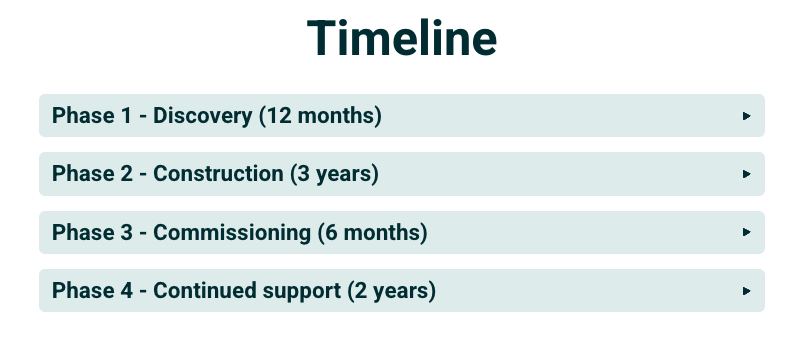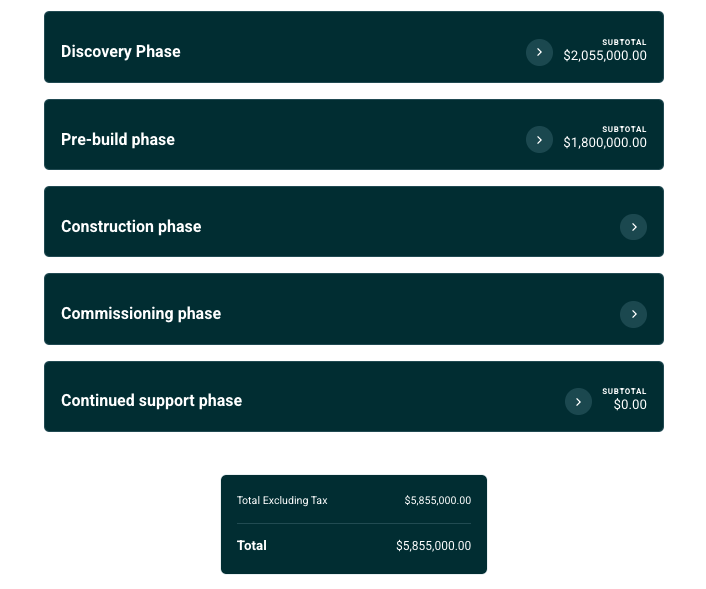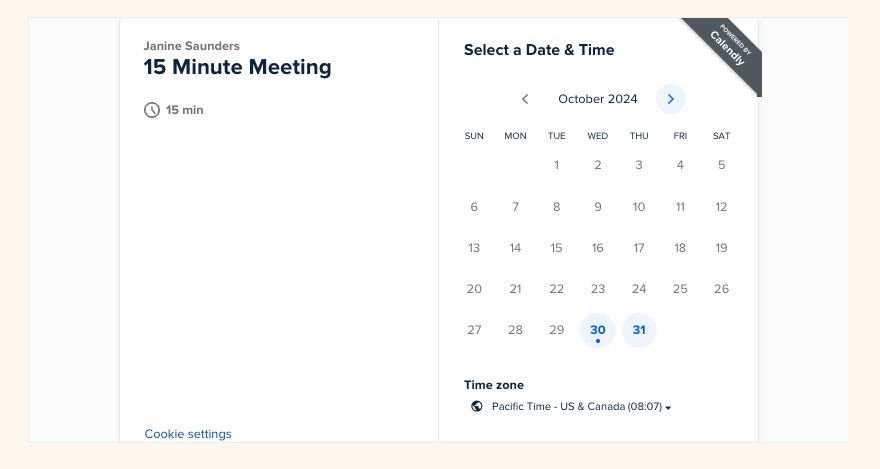A bold opportunity knocks, but it’s not the kind that you get in the bag so easily. It arrives as a Request for Proposal (RFP)—a detailed blueprint of what a client needs, leaving the door slightly ajar for those determined enough to step through with a bid.
Mastering the art of the bid isn’t so easy in such a competitive world. Like most challenges, we’ve come to learn that it’s not just about what you say, but how you say it. Let’s look at how you can create a winning bid proposal that balances precision with persuasion to outshine the competition.
Looking for a TLDR? Check out our video on writing killer bid proposals:
What is a bid proposal?
In short, a bid proposal is a solution to a client's project requirements. It’s a document to show products, services, time, and pricing details that a company can offer to their clients, helping them complete a particular project.
How will the bidder demonstrate they can meet the client’s specific needs, solve their problems, and deliver the project on time and within budget? It’s going to have to be a competitive pitch—because clients will more often than not be viewing multiple proposals—so bid and let win.
A bid above the rest
So, we know that a bid proposal is both a strategy and a sales pitch. Not only will it allow your business to stand out with a competitive edge, but winning bids can also lead to long-term partnerships and increased business opportunities, a securable end goal.
First things first, let’s start off by looking at what key aspects to address. Though most bids vary, they usually include similar vital elements:
- Client details
- Your company details
- Project description
- Products or services provided
- Case studies
- Pricing information
- Timeline
- Terms and conditions
- Signature fields
Client details
Lay the groundwork for credibility by listing client details, showing that you understand who they are and what they need.
Include the owner’s name, address, contact information, and any specific project information or reference codes from the RFP. Ensure all relevant details are correct and up to date to avoid delays and prove that you’ve done your homework.
Your company details
The organization behind the service, this is where the contractor includes their details. As you did in the client details section, include your company name and address, phone number, and email address.
Salutation and introduction
A courteous way to let your company’s personal voice, work ethic, and philosophies shine through, this section begins by greeting the client and then thanking them for the opportunity to discuss the project. Think of it as a warm handshake - it’s your first impression and sets the tone for the rest of the document.
- Salutation: Personalized greeting to establish rapport.
- Opening Lines: "Thank you for the opportunity to submit this bid for [Project Name]. We have carefully reviewed the project’s scope and are excited to present our proposal."
- Valediction: Professional closing, such as "Sincerely" or "Best Regards," accompanied by your name, title, and company.
Motivation
Why partner with us?
Now that the formalities and politeness are out of the way (although don’t necessarily see this as a chore but rather a way to establish rapport), we need some motivation.
Think of this as your cover letter. This section is persuasive and value-driven and is where you transition from greetings to proving your worth. Consider the following discussion points and examples:
- Opening: "We believe [Your Company] is uniquely positioned to deliver this project because of our extensive experience in [relevant field]."
- Highlight Expertise: Mention specific projects or skills that align with the client’s needs, including metrics if possible.
- Why You Care: Express enthusiasm for the project and how your team is personally motivated to meet the client’s objectives:
"Our team is passionate about creating sustainable solutions, and we see this project as an opportunity to make a meaningful impact."
Remember, your motivation will really come to life if you are being genuine in your approach. Have competitors at the forefront of your mind when writing this section. Ask yourself: What makes our approach to the project unique?
Project description
This section provides a comprehensive look at how to transform the project from a blueprint into a thriving reality.
A project description is an influential summary that provides context for the proposal, outlining the key purpose, goals, and outcomes of the project. Think of it as the "what" and "why" behind the project.
What problem are we solving? What objectives will the project achieve? Why is it crucial and who benefits from the results?
Products or services provided
In a bid proposal, the projects and services section outlines exactly what you’re offering to deliver for the client, along with the specific tasks and resources involved.
This section gives clients a clear understanding of your approach, your role in the project, and the key deliverables they can expect.
A building renovation “projects and services” section might look like this, for example:
- Planning and Design
- Demolition and Site Prep
- Construction and Remodeling
- Project Management
- Post-Completion Support
Case studies
Stories that sell! Prove your worth by providing examples of successful past projects similar to the one you’re bidding for. Highlight successes, challenges overcome, and results achieved. Let your experience speak for itself.
Tips:
- Use metrics and data to back up your success stories (e.g. "Reduced downtime by 25%").
- Keep them short and focused—each case study should relate directly to the client's needs.
- Beat the bloat. Stick to facts and results—clients care about outcomes, don’t focus too much on your ability to tell an entertaining narrative.
- Avoid irrelevant examples. If it doesn’t align with the current project, leave it out.
Pricing information
Clearly analyzing costs and outlining pricing estimates in a bid proposal is critical for both setting client expectations and demonstrating professionalism. Transparent pricing builds trust, reduces potential misunderstandings, and showcases your attention to financial detail.
Here, aim for a well-reasoned pricing estimate that enhances your bid proposal’s transparency, professionalism, and competitiveness.
Interestingly, the lowest bid doesn’t always win the construction contract. The client will carefully review all aspects of a bid, including the team, infrastructure, and processes the business offers.
Timeline
Bid your time wisely!
A project schedule should include start and end dates, phases, and deadlines. As pricing and timeline often overlap, you might attach dates and deadlines to the phases in the pricing information mentioned above: How long will the discovery phase, pre-build phase and construction phases take?
In your scheduling, do not forget to factor in supply lead times, non-working days, permit approvals, and third-party aspects that might delay your schedule.
One thing that is often forgotten when it comes to timelines are the client feedback loops: Build in time for client reviews and revisions between phases. Delays often happen at these points, so it’s wise to give the client an estimated time for reviews and follow-up discussions.
You should also include risk buffers: Anticipate potential setbacks or risks that might impact the timeline, such as supply delays or resource changes. Adding a time buffer for unexpected issues shows foresight and can keep the project on track even if challenges arise.

Customize your Qwilr proposals with interactive and user-friendly timelines that your prospects will love
Terms and conditions
Just like every strong agreement, a bid proposal needs a clear set of terms and conditions to lay the foundation for a successful partnership. This section is where you spell out the rules - defining the responsibilities, obligations, and legal protections for both parties. Afterall, business is business.
The Terms and Conditions section not only protects both you and the client but also establishes mutual understanding right from the start.
Typically, here’s what to include:
- Payment Terms
- Warranties or Guarantees
- Liabilities and Risk Management
- Termination Clause
- Legal Jurisdiction (governing laws that will apply if any disputes arise)
Signature fields
Time for another handshake, but this one seals the deal. The signature fields not only formalize the agreement but also offer a final, subtle opportunity to reassure your client that they’re making the right choice. After all, your signature is a promise to deliver on everything you’ve outlined in the proposal.
With Qwilr’s bid proposal template, you can conveniently insert e-signatures, including:
- Signature Line for Client
- Signature Line for Your Company
- Date Fields

Use Qwilr's esignature and integrated payment functionality to secure legally compliant signatures—all within your web-based proposal
How to write an effective project bid
May the best bid win. It’s only fair that the most deserving proposal lands the contract so let’s have a look at some top tips on how to make that happen.
Get a thorough understanding of the project and client
A wise speaker checks who’s in the seats before taking the stage. The first step in creating a persuasive bid proposal is to understand the audience. This means researching the client's company and industry, as well as identifying their specific needs and pain points. By doing this, the proposal can be tailored to address the client's unique challenges, which will increase your value proposition and the chances of winning the bid.
Scout the field before you play your hand
Take it a step further and research your competition. By understanding what competitors offer, you can highlight your own unique strengths and address any weaknesses that could give others an advantage. It’s a smart way to help you understand market standards and refine your strategy.
Include additional information
For most projects, you’re winning if you’ve covered the above aspects, but projects may sometimes call for extra information, including:
- Supporting Documents: Attach any additional resources, like resumes, certifications, diagrams, or charts.
- FAQs or Glossary: Clarify any industry-specific terms or frequently asked questions.
- Alternative Prices: Including alternative pricing options can illustrate how costs may shift with the addition or removal of certain services. This is particularly helpful if some project details are still unclear, giving the client a clearer picture of potential adjustments.
- Unit Prices: If the contract is based on unit prices, be sure to specify them here. This is more applicable in smaller-scale projects, where it’s crucial to outline the cost per unit of work.
- Warranty Information: Warranty coverage can be a powerful selling point, showing clients that you stand by the quality and durability of your work.
Let team members review
Teamwork is the dream work. Involving team members in the review process can help ensure that the bid proposal is accurate, complete, and persuasive. If you really want to get everyone on board (many minds are better than one), take a collaborative approach when tackling a bid proposal.
The benefits include diverse perspectives, error detection, improved clarity and readability, and alignment with team goals. And what’s more, all of this enhances the persuasiveness. What a way to drive the project!
Analyze cost and set out pricing estimates clearly
In order for our client to understand the pricing in its entirety, we don’t want to drop a bomb on the page, that is, the final estimated figure. It’s a good idea to break the cost into phases. If it’s a construction company for example, the break-down might look something like this:

With Qwilr it’s easy to embed interactive price and quote blocks into every bid proposal
Include interactive elements to stand out
Showcase both expertise and innovation by including interactive features in your bid proposal. This not only demonstrates that you’re tech-savvy but increases the perception of your brand’s forward-thinking approach.
Qwilr’s templates allow you to:
- Create sales collateral that looks like a web page for prospects
- Embed engaging content: add videos, interactive pricing, calendar links and more
- Create, edit, re-use, drag and drop information, text and infographics- convenience at its finest
- Set brand colors and add custom fonts
- Show value with an interactive ROI calculator

Easily embed calendars for booking, data-driven dashboard, or growth and ROI calculators in your Qwilr proposals
Communications and follow-up
The hard work has been done and the bid has been submitted. Nice! But staying in touch with the client is essential - it keeps your proposal top of mind and can help nurture a promising relationship. A quick follow-up email or call to confirm receipt shows attention to detail and reinforces interest in the project.
If the client raises questions or concerns, addressing them quickly is key. This not only highlights your expertise but also shows your commitment to meeting their needs. Even if you’re not selected for the project, maintaining a friendly, professional connection leaves a lasting impression. A thoughtful thank-you note for considering your bid may put you in the limelight for future opportunities - after all, manners maketh a man.
Bid proposal template
Whether you’re a construction company submitting a proposal to build a new office building or an IT firm bidding to provide software development services—creating a template with tact is made easy through Qwilr’s bid proposal template.
Incorporate images, videos, and other multimedia elements to your template, and customize each section, adding what you see fit. Qwilr’s bid proposal template includes the following project features and is fully customizable:
- Case study
- Timeline
- Build Site
- Initial estimate
- Meet our team
Secure your next business opportunity with Qwilr
A bid proposal isn’t just paperwork—it’s the bridge between your business’s expertise and your client’s ambitions. It’s where strategy meets storytelling.
A personalized template improves understanding, aesthetically showcases expertise, encourages discussion, and conveys a sense of competence.
Qwilr offers an impressive range of software templates, which can be browsed by category, including proposals, reports, brochures and guides. Sign up for a free trial to maximize on the opportunities to get the task done quickly and effectively. And when it’s so easy, you might even enjoy yourself in the process.
About the author

Brendan Connaughton|Head of Growth Marketing
Brendan heads up growth marketing and demand generation at Qwilr, overseeing performance marketing, SEO, and lifecycle initiatives. Brendan has been instrumental in developing go-to-market functions for a number of high-growth startups and challenger brands.